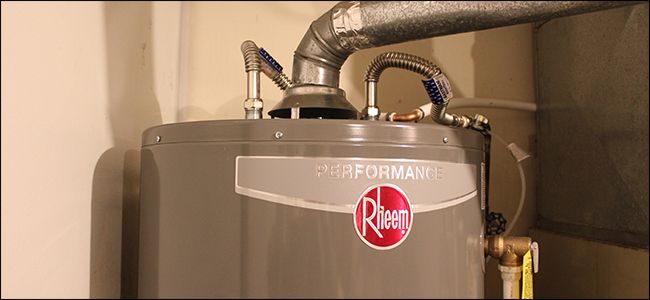How to Maintain Your Home's Hot Water System Functioning Well
How to Maintain Your Home's Hot Water System Functioning Well
Blog Article
Right here in the next paragraphs you can locate a good deal of first-rate details pertaining to How to Maintain a Hot Water Heater in a Few Simple Steps.

Warm water is important for everyday comfort, whether it's for a refreshing shower or washing recipes. To guarantee your warm water system runs effectively and lasts longer, normal upkeep is essential. This short article gives functional tips and understandings on how to keep your home's hot water system to prevent interruptions and costly repair work.
Intro
Maintaining your home's warm water system could appear challenging, but with a few straightforward steps, you can ensure it operates efficiently for many years to come. This overview covers whatever from understanding your warm water system to do it yourself maintenance tips and recognizing when to call professional help.
Importance of Keeping Your Warm Water System
Regular maintenance not just prolongs the lifespan of your warm water system yet likewise ensures it operates effectively. Ignoring maintenance can bring about reduced efficiency, greater power bills, and also early failure of the system.
Indicators Your Hot Water System Needs Upkeep
Recognizing when your warm water system requires focus can protect against major concerns. Keep an eye out for indications such as inconsistent water temperature level, unusual noises from the heater, or corroded water.
Understanding Your Hot Water System
Before diving into upkeep tasks, it's valuable to comprehend the basic elements of your warm water system. Normally, this consists of the hot water heater itself, pipelines, anode rods, and temperature level controls.
Month-to-month Maintenance Tasks
Regular month-to-month checks can aid capture minor concerns prior to they rise.
Purging the Water Heater
Flushing your water heater eliminates debris build-up, improving effectiveness and extending its life.
Monitoring and Replacing Anode Rods
Anode rods stop deterioration inside the container. Inspecting and replacing them when worn is crucial.
Examining and Changing Temperature Settings
Changing the temperature level setups makes sure optimum efficiency and safety.
DIY Tips for Maintenance
You can carry out several maintenance tasks yourself to keep your hot water system in leading problem.
Looking for Leakages
Consistently evaluate pipelines and links for leakages, as these can bring about water damage and higher bills.
Evaluating Pressure Relief Valves
Checking the stress safety valve ensures it functions correctly and prevents too much stress build-up.
Shielding Pipes
Insulating hot water pipelines reduces heat loss and can conserve energy.
When to Call a Professional
While DIY maintenance is valuable, some concerns need expert proficiency.
Complicated Issues Needing Professional Help
Examples include significant leaks, electric issues, or if your hot water heater is constantly underperforming.
Routine Specialist Upkeep Benefits
Expert maintenance can include complete assessments, tune-ups, and ensuring conformity with safety and security criteria.
Final thought
Routine maintenance of your home's hot water system is crucial for performance, durability, and expense savings. By adhering to these ideas and recognizing when to seek specialist aid, you can guarantee a trustworthy supply of warm water without unanticipated disruptions.
How to Maintain an Instant Hot Water Heater
Before tinkering with your hot water heater, make sure that it’s not powered on. You also have to turn off the main circuit breaker and shut off the main gas line to prevent accidents. Also turn off the water valves connected to your unit to prevent water from flowing into and out of the appliance. 2. When you’re done, you have to detach the purge valves’ caps. These look like the letter “T†and are situated on either side of the water valves. Doing so will release any pressure that has accumulated inside the valves while at the same time avoid hot water from shooting out and burning your skin. 3. When the purge valves’ caps are removed, you have to connect your hosing lines to the valves. Your unit should have come with three hoses but if it didn’t, you can purchase these things from any hardware or home repair shops. You can also get them from retail stores that sell water heating systems. Read the user’s manual and follow it to complete this task properly. When the hosing lines are connected, open the purge port’s valves. 4. You should never use harsh chemical cleaners or solutions when cleaning your unit. Make use of white vinegar instead. It should be undiluted and you’ll probably use about 2 gallons. 5. Now flush your water heater. This task should probably take about 40 minutes. We can’t give you specific directions for this because the procedure is carried out depending on the type, model and brand of your heater. With that being said, refer to the user’s manual. 6. When you’re done draining the unit, you have to turn off the purge port valves again. Remove the hosing lines that you earlier installed on each of the water valves. Put the valve caps (purge port) back in their respective places and be very careful so as not to damage the rubber discs that are found inside these caps. 7. Now that everything’s back in place, check your user’s manual again to find out how to reactivate your water heating system. 8. Once it is working, turn one of your hot water faucets on just to let air pass through the heater’s water supply pipes. Leave the tap on until water flows smoothly out of it. https://www.orrplumbing.com/blog/2014/september/how-to-maintain-an-instant-hot-water-heater/

We were guided to that article on Water Heater Maintenance Tips You Can't Afford to Forget from a friend on another web blog. Are you aware of somebody else who is occupied with the niche? Feel free to promote it. I love your readership.
Apply Now Report this page